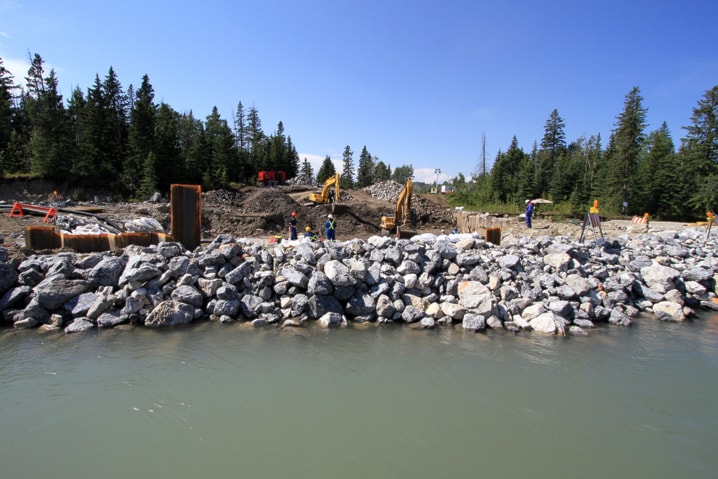Last year’s pipeline break spilling 3,000 barrels of oil into the Red Deer River near Sundre is equal to one second of the river’s flow during flood, an expert told a water conference Thursday.
“Far more oil enters rivers being flushed off sidewalks and roads from our cars and lawnmowers, but they’re more dispersed,” said Stewart Rood, a University of Lethbridge environmental science professor.
“We need to put these things in context. It’s a pulse: people see it and smell it.”
A researcher who’s studied the Red Deer River floodplain for 20 years, Rood spoke during the final day of Water and the Environment: Watershed Planning and Management in Alberta. The first annual three-day conference hosted by Canadian Water Resources Association Alberta and Alberta’s watershed planning and advisory councils, which includes the Red Deer River Watershed Alliance, was held in advance of Canada Water Week March 18-24 and World Water Day on March 22.
Rood and his team studied three sites between Sundre and Glennifer Lake just days after the Plains Midstream pipeline broke June 7. Weeks after, oil coating leaves had evaporated into a chalky, asphalt-like, non-toxic residue identified using infrared photographs. Despite some leaves dying, by late August the balsam poplar, sandbar willow and wolf willow remained alive and cloning with shoots, though their growth had slowed.
“It’s similar to an out-of-season frost or an insect outbreak. This is how the system responds without our intervention. The relevant interval to recovery is weeks, not months.”
While minimizing human and animal contact with spilled oil and speeding up its containment and clean-up are vital, shutting off pipeline flow during the Red Deer River’s spring flood is more so.
“The Red Deer River near Sundre is an unfavourable location for pipelines. The river’s very dynamic there and leads to more vulnerability for pipelines and bridges.”
A freshwater scientist with Alberta Environment and Sustainable Resource Development who monitored the spill agreed.
“It’s a wild river and changes channel all the time,” said Chris Teichreb, adding older pipelines are less than half a metre beneath the river’s bed, making them susceptible to erosion from spring runoff’s fast currents.
“Plains is planning to directionally drill to depths of 15 to 20 metres below (the river bed) so there is no chance of them getting washed out.”
He said currents broke down the oil into minute particles by the time they reached the Anthony Henday and City of Red Deer water treatment plants, keeping concentrations below provincial guidelines.
Had they gone above, Alberta Health was prepared to shut down both plants, forcing Plains Midstream to truck in water for the more than 150,000 Central Albertans both plants serve.
“We’re now part of discussions with the city to see that doesn’t happen.”
A public discussion of water-related topics, including healthy lakes, water use in hydraulic fracturing, water management and drinking and wastewater systems, was also held Thursday night.
Diana McQueen, the province’s Environment and Sustainable Resource Development minister, has said Alberta’s water is not for sale.
More information, including an online provincial survey until March 29, is available at www.waterconversation.alberta.ca.
rfiedler@www.reddeeradvocate.com
